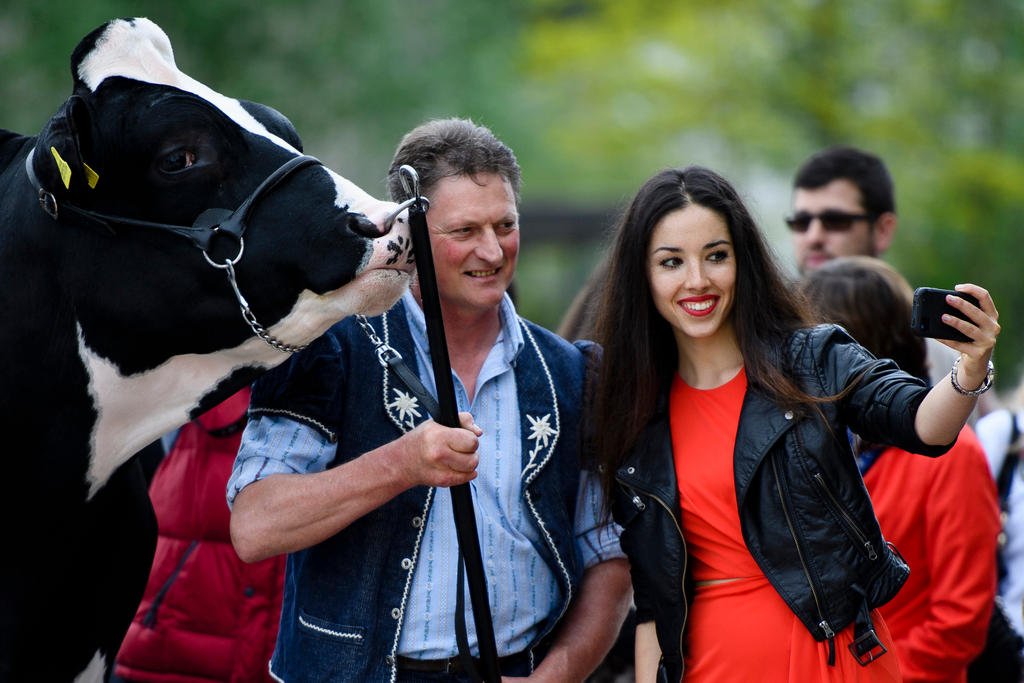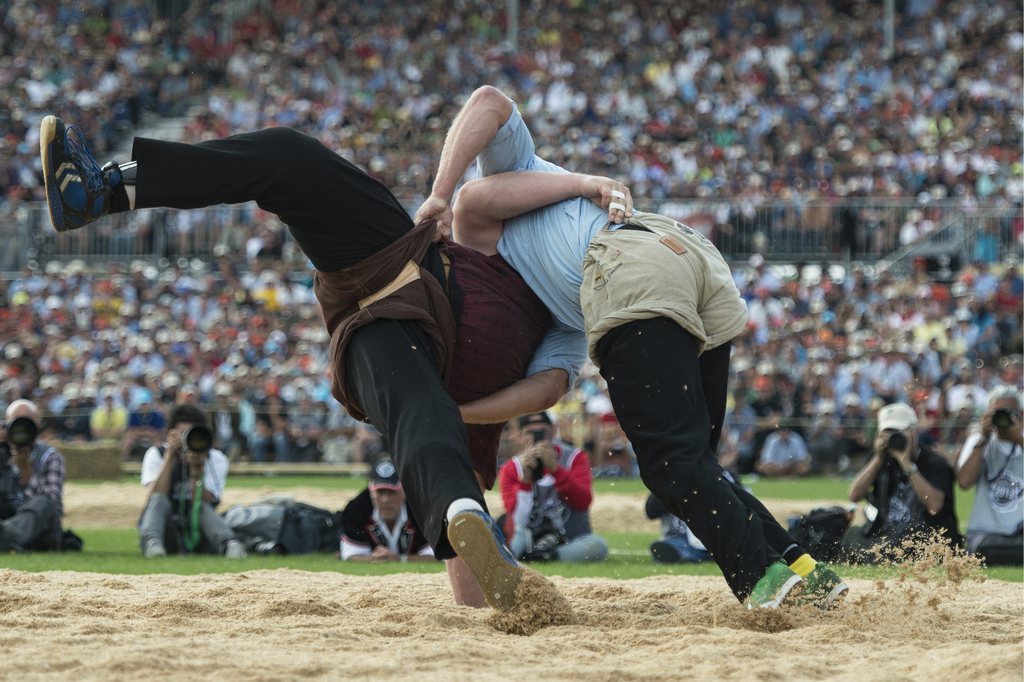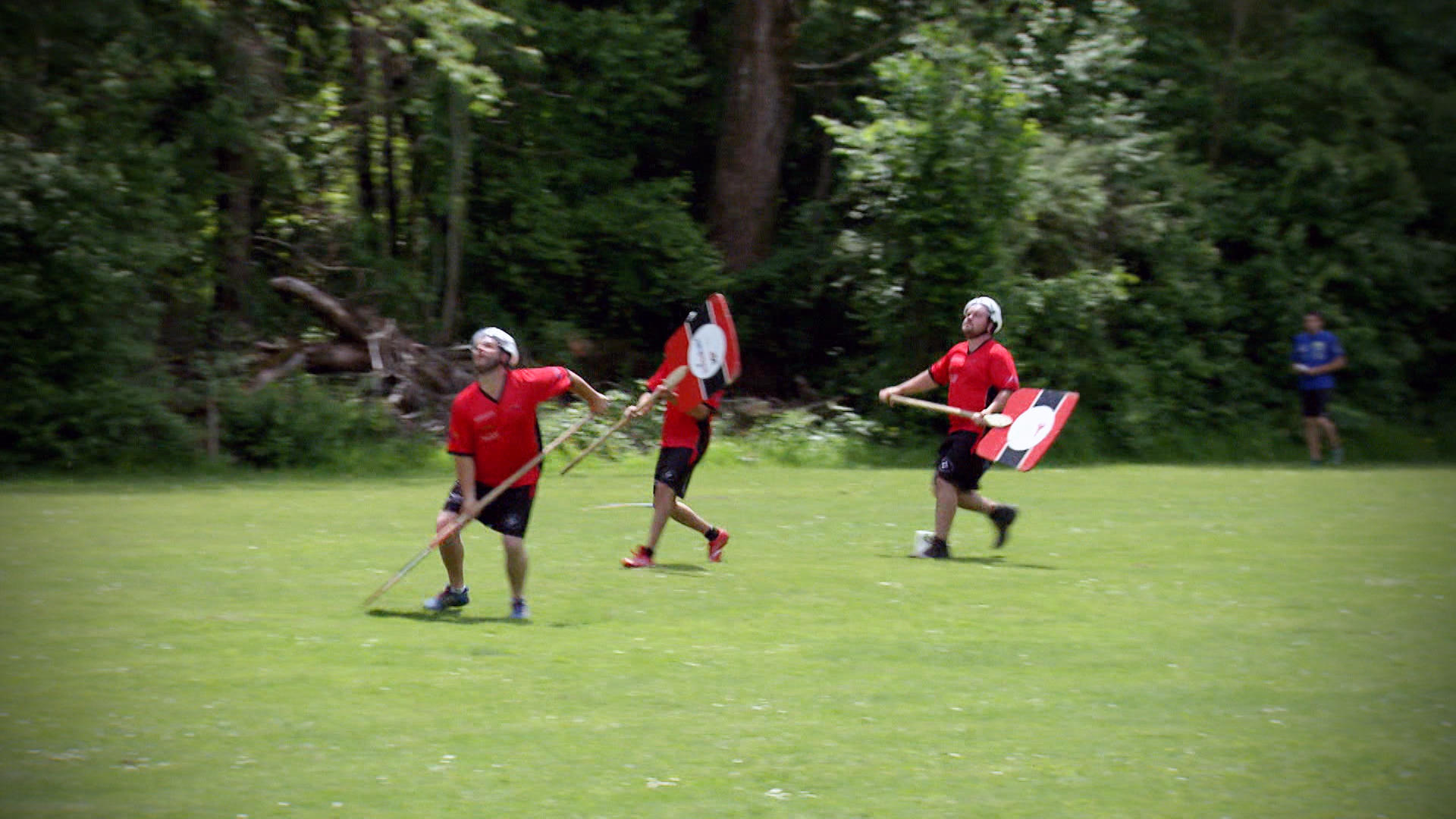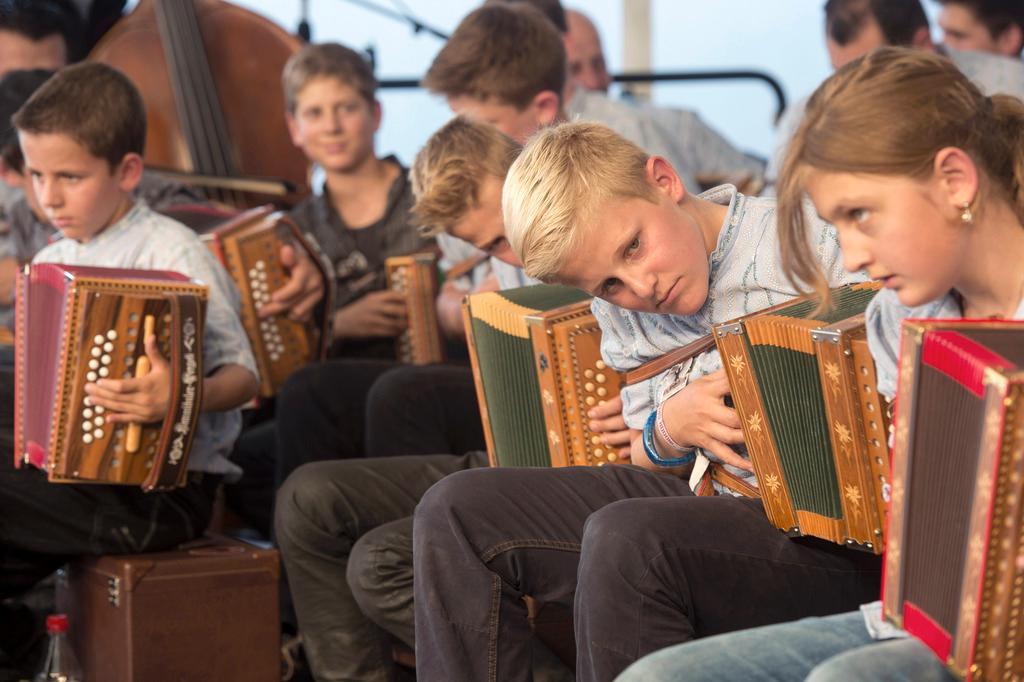
Five things to know about Swiss wrestling

Switzerland is gearing up for a wrestling festival of unparalleled proportions. The traditional event only takes place every three years and tickets are like gold dust.
Now in its 44th edition, the Federal Wrestling and Alpine Games Festival, or ‘Schwingfest’ has been going since the end of the 19th century, and attracts spectators from at home and abroad. With around 250,000 people expected over three days it’s the country’s biggest sporting event, but what’s the draw?
The Federal Wrestling Festival has a long tradition, having been organised for the first time in 1895. Since then, it has been held once every three years. The previous festival took place in 2013 in Burgdorf (canton Bern) and ended with the crowning of Matthias Sempach.

More
Wrestling festival crowned with success
It has become a tradition to hold the festival in a French-speaking region of Switzerland once every 15 years. After La-Chaux-de-Fonds (Neuchâtel) in 1972, Sion (Valais) in 1986 and Nyon (Vaud) in 2001, canton Fribourg was chosen to host the 2016 competition, in Estavayer-le-Lac (Estavayer2016External link).
In fact, the event will be held in the grounds of the military air base in Payerne, around 7km from Estavayer, in canton Vaud. The city of Fribourg will hold an opening ceremony on Friday in place of the traditional folklore parade.
It’s no exaggeration to speak of the country’s “largest sporting event”. The previous festival in Burgdorf drew a record 300,000 spectators, and more than 250,000 are expected in Broye. A few statistics demonstrate the scale of the event: a budget of CHF25 million ($26 million), 4,000 volunteers, festival grounds covering 90 hectares, and a campground with room for 20,000.
Swiss wrestling is an ancient contest that has been around at least since the 13th Century. Originally the sport was practised only by farmers in Alpine areas. After practically disappearing, Swiss wrestling returned to popularity in the 19th century and became a Swiss national sport, in tandem with the development of patriotism in Switzerland.
In French the sport is called “lutte à la culotte” (“battle in shorts”) due to the special shorts worn by the competitors. The battle takes place in a circular sawdust ring. The objective is to lift your opponent off his feet and pin him on his back on the ground, all the while keeping a firm grip on his shorts. The winner is chosen by a three-person jury.
Swiss wrestling is more sophisticated than it first appears. It comprises around 100 different moves, five of which are used most often.
In addition to Swiss wrestling, the Alpine games include two other competitions. The first is boulder throwing, which is broken down into several different disciplines: throwing a 20kg boulder with momentum; throwing a 40kg boulder from a stand; and throwing the legendary 83.5kg “Unspunnen” stone from a stand or with momentum.
The second competition, “Hornussen” (hornets), is a team sport that looks a bit like a cross between golf and baseball. One team launches a sort of puck into the air using a long, flexible metal rod. Members of the opposite team stand in a field with large wooden paddles and try to intercept the puck before it lands. If the puck lands on the ground without being touched by a paddle, the team in the field is penalised and the penalties are added to the “batting” team’s score.

More
The Swiss farmers‘ game
With a capacity of 52,016 spectators, the stadium used for the Swiss Wrestling Festival is the biggest temporary stadium in the country. In May, the 4,016 available public tickets for the arena where the wrestling competitions take place were sold in less than two hours.
Despite not having entry to the stadium, people without tickets show up to watch the wrestling competitions on giant screens. And anyone can watch the boulder-throwing and Hornussen competitions.
The opening ceremony and all the cultural events taking place on nine stages around the grounds are also open to the public without a ticket.
At the festival the emphasis is on popular amateur sport. Participants don’t receive prize money; more often they are rewarded with “nature”, choosing their prizes in a special pavilion. The King of Wrestling is crowned and sent home with the traditional first prize: a bull.
But the amateur aspects of the sport are seriously compromised by the visible presence of a range of sponsors. These are indispensable when it comes to financing the competition, which has a budget in the order of CHF25 million.
But the move from amateur sport to media spectacle has generated criticism, as described in a swissinfo.ch report from the previous festival three years ago in Burgdorf.
Regardless of whether the focus is on culture or sport, federal festivals are designed to bring people together. They promote national cohesion and celebrate the Swiss identity.

More
Making time for the timeless
But for some, this celebration of a traditional, rural, Alpine Switzerland corresponds to an idealised image of the country promoted by the conservative political right. At the end of the previous festival in Burgdorf, some press denounced the “staging of Swiss clichés”.
Have you ever been to a Swiss wrestling festival? Do you have something similar in your country? Let us know in the comments below.
Translated from French by Jeannie Wurz

In compliance with the JTI standards
More: SWI swissinfo.ch certified by the Journalism Trust Initiative





























You can find an overview of ongoing debates with our journalists here . Please join us!
If you want to start a conversation about a topic raised in this article or want to report factual errors, email us at english@swissinfo.ch.